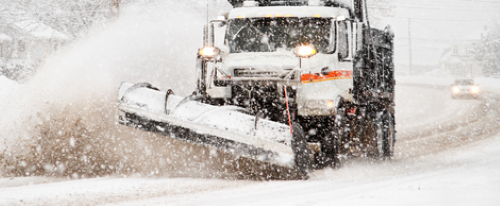As Winter Storms Continue, CPSC Urges Families to Take Steps to Prevent Carbon Monoxide Poisoning and Fires

WASHINGTON, D.C. – The U.S. Consumer Product Safety Commission (CPSC) is urging consumers to take steps to protect themselves from carbon monoxide (CO) poisoning and fires as winter storms and bitter cold continue to impact millions of Americans.
Loss of Power—Using a Generator Safely
Consumers need to be especially careful when storms knock out electrical power. CO poisoning from gasoline-powered portable generators can kill in minutes. CO is called the invisible killer because it is colorless and odorless. CO poisoning from portable generators can happen so quickly that exposed persons may become unconscious before recognizing the symptoms of nausea, dizziness or weakness.
An average of nearly 100 consumers die in the U.S. each year from CO poisoning from portable generators, according to CPSC’s latest report on Non-Fire Carbon Monoxide Deaths
Associated with the Use of Consumer Products. An earlier CPSC report shows that from 2011 through 2021, where race was known, non-Hispanic Black or African Americans accounted for 23 percent of generator-related CO deaths, which is much higher than their share in the U.S. population.
In the case of a power outage, follow these important life-saving tips:
- NEVER operate a portable generator inside a home, garage, basement, crawlspace, shed or other enclosed spaces. Opening doors or windows will not provide enough ventilation to prevent the buildup of lethal levels of CO.
- Operate portable generators outside only, at least 20 feet away from the house. Don’t operate a generator on a porch or in a carport. It may be convenient, but it’s too close to home and puts your family at risk of CO poisoning. Direct the generator’s exhaust away from your home and other buildings where someone can enter. Close windows and seal off vent openings that are near the generator or in the path of its exhaust.
- Regularly check and maintain your portable generator to ensure it will work properly when needed. Read and follow all labels, instructions and warnings on the generator and in the owner’s manual.
- Look for portable generators that have a CO shut-off safety feature. This safety feature automatically shuts off the generator when high levels of CO are present around the generator. Models that are certified to the latest PGMA G300-2018 and UL 2201 safety standards are estimated to reduce deaths from CO poisoning by 87% and 100%, respectively. UL 2201 certified models have reduced CO emissions in addition to the CO shut-off feature.
Check CO and Smoke Alarms
- Working smoke and CO alarms save lives! Install battery-operated CO alarms or CO alarms with battery backup on each level and outside separate sleeping areas at home. Interconnected CO alarms are best; when one sounds, they all sound.
- Make sure smoke alarms are installed on every level and inside each bedroom at home.
- Test CO and smoke alarms monthly to make sure they are working properly, and replace batteries, if needed. Never ignore an alarm when it sounds. Get outside immediately. Then call 911.
- Clear snow away from the outside vents for fuel-burning appliances such as furnaces so that dangerous carbon monoxide does not build up in the house.
Dangers with Portable Heaters
- Keep all sides of the portable heater at least 3 feet from beds, clothes, curtains, papers, sofas and other items that can catch fire.
- Place the heater on a stable, level surface, located where it will not be knocked over.
- NEVER leave running unattended in a confined space to reduce hyperthermia hazards.
- When using electric portable heaters, ALWAYS use a wall outlet; NEVER a power strip and NEVER run the heater’s cord under rugs or carpeting.
- Be mindful of children and pets around portable heaters.
Dangers with Charcoal and Candles
- Never use charcoal indoors. Burning charcoal in an enclosed space can produce lethal levels of carbon monoxide. Do not cook on a charcoal grill in a garage, even with the garage door open.
- Use caution when burning candles. Use flashlights or battery-operated candles instead. If using candles, do not burn them on or near anything that can catch fire. Never leave burning candles unattended. Extinguish candles when leaving the room and before sleeping.
Dangers with Gas Leaks:
- If you smell or hear gas leaking, leave your home immediately and contact local gas authorities from outside the home. Do not operate any electronics, such as lights or phone, before leaving.
If Your Home Floods—Dangers with Wet Appliances
- Look for signs that your appliances have gotten wet. Do not touch wet appliances that are still plugged into an electrical source.
- Before using your appliances, have a professional or your gas or electric company evaluate your home and replace all gas control valves, electrical wiring, circuit breakers, and fuses that have been under water.
CPSC resources:
Carbon Monoxide Safety Center (Spanish)
Link to broadcast quality video for media:
Winter Storm safety b-roll: https://spaces.hightail.com/space/Nf1RH1JDGn
CPSC spokespeople are available for interviews. Email jechavez@cpsc.gov or call (202) 923-7467 to arrange for an interview.
*Annual average for the number of reported fatal non-fire CO exposure deaths associated with generators each year from 2017-2019, the last three years of complete data in CPSC’s report (2011-2021). (Report/Table 3)